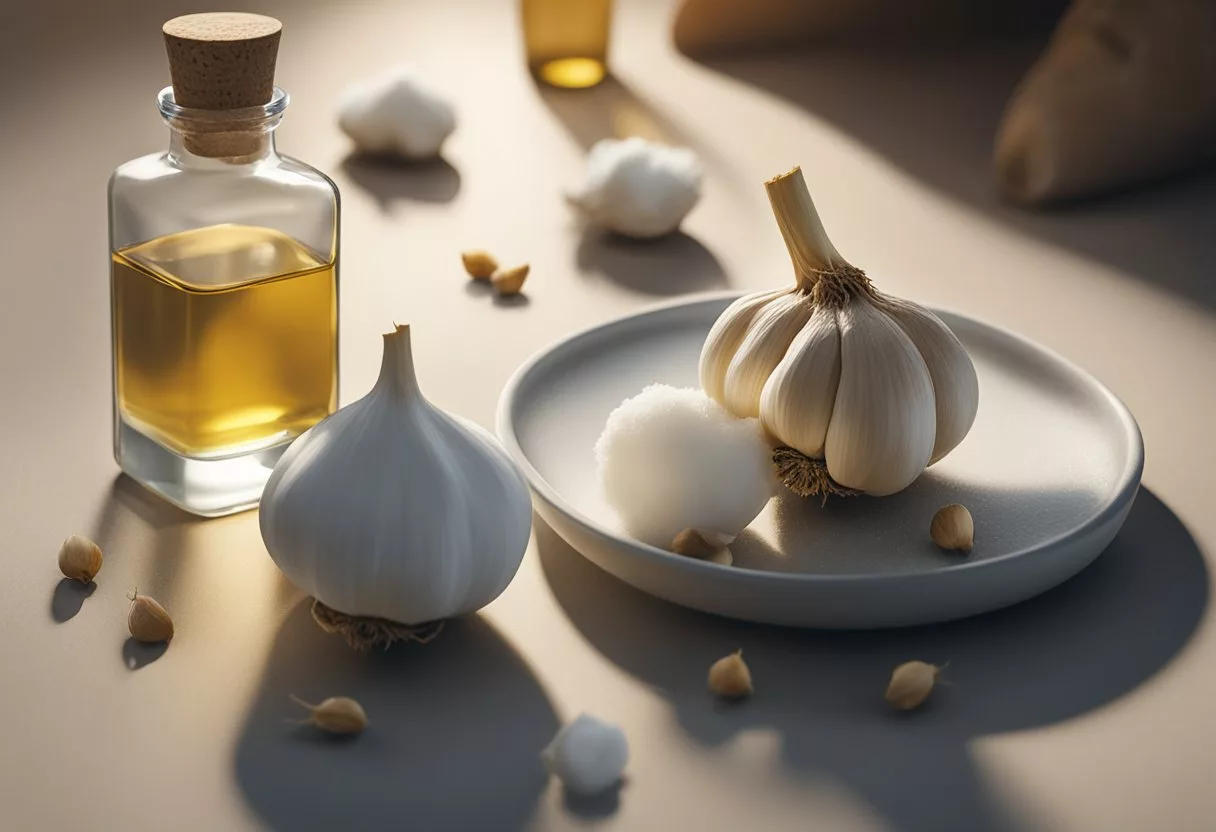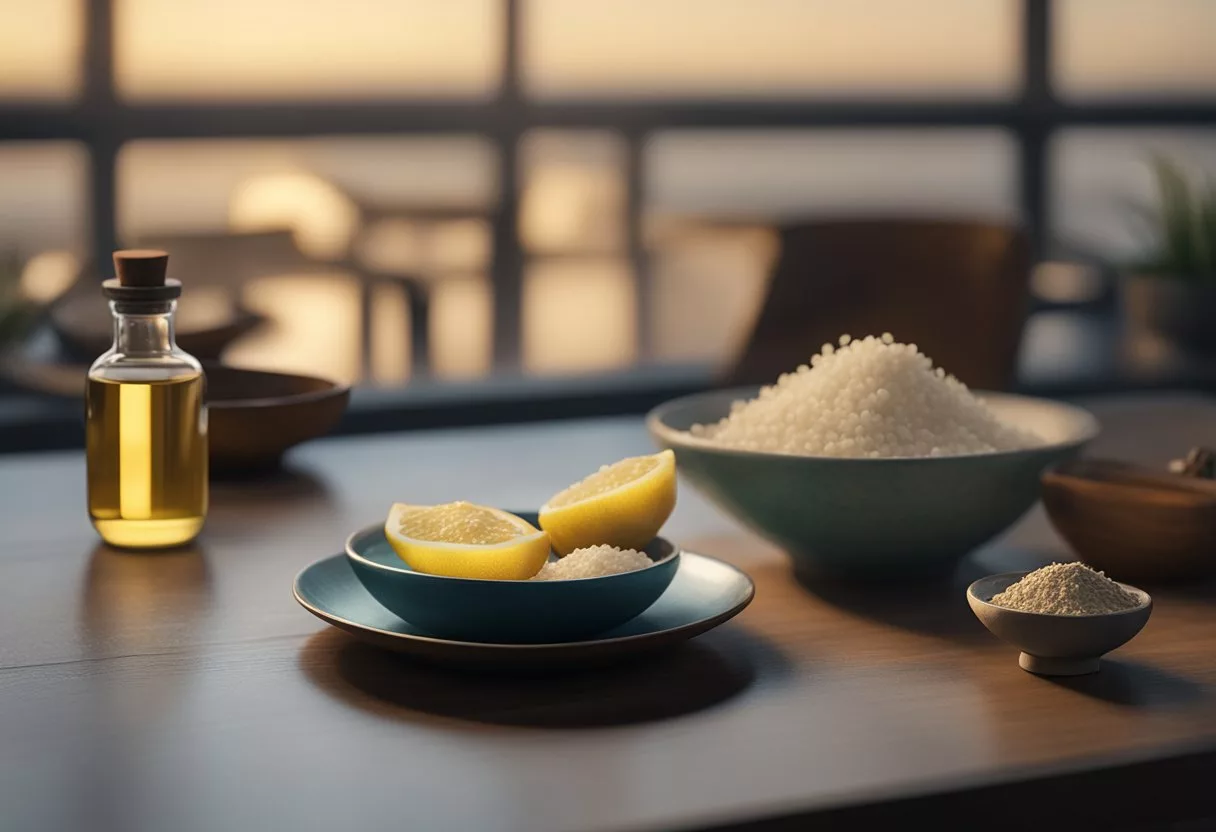Dealing with a toothache can be a real pain, but there’s good news: many effective home remedies can ease toothache symptoms. Simple, natural ingredients like clove oil, garlic, and saltwater can provide quick relief. While these remedies can help manage the pain, it’s also important to know when to seek professional help.

From ice packs to herbal treatments, there are various methods to manage a toothache at home. Clove oil, for instance, has been praised for its pain-relieving properties. Similarly, gargling with warm saltwater can reduce inflammation and clean the affected area. These methods are not only effective but also easy to find and use.
Maintaining good dental hygiene and making some lifestyle adjustments can prevent toothaches from happening in the first place. Regular brushing, flossing, and avoiding sugary foods play a crucial role in maintaining oral health. However, if the pain persists, it is crucial to consult a dentist for proper treatment.
Key Takeaways
- There are many effective home remedies for toothache relief.
- Using clove oil and saltwater can help manage toothache pain.
- Good dental hygiene can prevent future toothaches.
Understanding Toothaches
Toothaches can result from a variety of dental issues and signify underlying problems. They often cause discomfort and can impact daily activities.
Causes of Toothache
Toothaches arise from several sources. Common causes include tooth decay, gum disease, and infections.
Tooth decay happens when bacteria in the mouth produce acids that erode the enamel. This can lead to cavities, which expose the tooth nerve, causing pain.
Gum disease, such as gingivitis or periodontitis, leads to inflamed gums that can be painful and bleed easily. If untreated, it may result in tooth loss.
Infections occur when decay goes untreated. This can lead to an abscess, a pocket of pus, forming at the root of the tooth. An abscess can cause severe pain and swelling.
Other causes include teeth grinding (bruxism), which can wear down the teeth and cause sensitivity, and a cracked tooth, which exposes the inner layers of the tooth. Sensitive teeth may react painfully to hot or cold substances due to worn enamel or exposed roots.
Tooth Pain and Its Implications
Tooth pain can vary in intensity and duration. It often indicates issues that may require dental intervention.
Persistent pain commonly signals tooth decay or a cavity. Sharp, sudden pain when biting can result from a cracked tooth or a loose filling.
Throbbing pain may suggest an infection or abscess. This type of pain often worsens without treatment and can spread to the jaw or ear.
Sensitive teeth can cause sharp pain when exposed to temperature changes. This sensitivity is usually due to worn enamel or gum recession, exposing the tooth nerve.
Ignoring tooth pain can lead to more severe dental issues, such as the need for a root canal. Regular dental check-ups are crucial for maintaining good dental health and addressing problems early.
To manage pain at home, remedies like a cold compress or saltwater rinse can provide temporary relief. For effective long-term solutions, consult with a dentist.
Immediate Pain Relief Strategies

Toothaches can cause severe discomfort, and immediate pain relief is often needed. Using a cold compress or ice pack can help reduce swelling, while painkillers and anti-inflammatory medications provide additional relief.
Cold Compress and Ice Pack
Applying a cold compress or ice pack to the area can effectively reduce pain and swelling. The cold temperature helps to constrict blood vessels, which decreases blood flow to the affected area. This, in turn, reduces inflammation and numbs the area, providing relief from toothache.
To use a cold compress, wrap a bag of ice or frozen peas in a cloth and apply it to the outside of your cheek near the sore area. Hold it in place for 15-20 minutes, then take a break for the same amount of time before reapplying. Repeat this process as needed to alleviate pain.
Painkillers and Anti-inflammation
Over-the-counter painkillers can be very effective for managing toothache pain. Taking Ibuprofen, Aspirin, Acetaminophen or Naproxen can help reduce inflammation and provide pain relief. These medications, known as NSAIDs (Nonsteroidal Anti-inflammatory Drugs), work by blocking the production of certain chemicals in the body that cause pain and swelling.
It’s important to follow the recommended dosage instructions on the medication packaging. Ibuprofen and Aspirin are also known for their anti-inflammatory properties, which can help further reduce swelling associated with a toothache.
If pain persists, consult with a healthcare professional to ensure there are no underlying issues that need to be addressed.
Natural Remedies and Herbal Treatments

Toothaches can be very painful, making it important to find effective relief. This section covers various natural remedies and herbal treatments known to ease toothache pain and reduce inflammation.
Clove Oil and Other Essential Oils
Clove oil is highly recommended for toothache relief due to its strong antiseptic and anti-inflammatory properties. The active ingredient, eugenol, can numb the pain and reduce swelling. To use, apply a small amount directly to the affected area with a cotton ball.
Other essential oils like tea tree oil and peppermint oil also offer benefits. Tea tree oil is known for its antibacterial properties, which can prevent infection. Peppermint oil provides a cooling effect and helps numb the pain. Always dilute essential oils with a carrier oil to avoid irritation.
Natural Rinses and Washes
Saltwater rinses are simple yet effective. By mixing 1/2 teaspoon of salt in a glass of warm water, you create a natural mouthwash that can reduce inflammation and clean the affected area.
Hydrogen peroxide rinse can also be effective. Mix equal parts of 3% hydrogen peroxide and water, swish in your mouth for about 30 seconds, then spit out. This helps reduce bacteria and alleviate pain.
Apple cider vinegar can be used as a rinse to balance pH levels and fight bacteria. Dilute a tablespoon in a glass of water and swish gently. Tea rinses, such as green tea, contain antioxidants and can soothe the gums while offering antibacterial benefits.
Garlic, Turmeric, and Other Antibacterial Foods
Garlic contains allicin, a compound with strong antibacterial properties. Crushing a garlic clove and applying it to the affected tooth can help reduce pain and fight infection.
Turmeric is another powerful option due to its anti-inflammatory and antioxidant properties. Make a paste with turmeric powder and water, and apply it to the affected area.
Honey serves as a natural antibacterial agent. Applying a small amount to the sore area can help reduce swelling and prevent bacterial growth. These foods not only offer temporary relief but also help in addressing underlying bacterial issues.
These natural remedies aim to provide relief from toothache while promoting oral health through natural and herbal means.
Dental Hygiene Practices
Good dental hygiene practices can prevent toothaches and maintain overall oral health. Key practices include effective brushing and flossing techniques and choosing appropriate toothpaste and mouthwash.
Effective Brushing and Flossing
Brushing and flossing are essential for maintaining dental health. It is important to brush twice daily, using a soft-bristled toothbrush to avoid damaging the gums. Each brushing session should last for at least two minutes, and covering all tooth surfaces, including the back molars and gumline, is crucial.
Flossing helps remove food particles and plaque that a toothbrush cannot reach. Using about 18 inches of floss, wind most of it around each middle finger, leaving an inch or two to work with. Gently slide the floss between teeth, curving it into a C shape to clean the sides of each tooth. Opt for waxed floss for easier maneuvering.
Choosing the Right Toothpaste and Mouthwash
Selecting the right toothpaste is critical. Look for toothpaste containing fluoride, which helps strengthen tooth enamel and protect against decay. For those with sensitive teeth, desensitizing toothpaste can provide relief by blocking pain signals to the nerves.
Mouthwash complements brushing and flossing by reaching areas that may be missed. An antibacterial mouthwash with ingredients like chlorhexidine can reduce plaque and prevent gingivitis, while fluoride mouthwash offers added protection against cavities. It is important to use mouthwash as directed, typically swishing for 30 seconds and avoiding eating or drinking for at least 30 minutes after use.
By following these dental hygiene practices, individuals can reduce the risk of toothache and promote long-term oral health.
When to See a Dentist
It’s important to recognize when a toothache needs professional dental care. While some toothaches can be managed with home remedies, there are specific symptoms that indicate the need for a dentist’s expertise.
Symptoms Indicating a Dental Visit
Persistent Pain: If the toothache doesn’t go away after a day or two, it’s vital to see a dentist. Persistent pain can indicate serious issues like cavities or infections.
Swelling: Swelling around the tooth or in the jaw can be a sign of an abscess, which is a serious infection that requires prompt dental treatment.
Fever: A fever alongside a toothache suggests an infection that could spread and cause more severe health issues if not treated.
Red or Bleeding Gums: Gums that are red, sore, or bleeding might indicate gum disease or an infection that needs a dentist’s evaluation.
Bad Taste in the Mouth: A persistent bad taste or bad breath that doesn’t go away might indicate an infection or an abscess that needs professional dental care.
Emergency Dentistry and Treatments
Emergency Dentist: Situations such as severe pain, abscess, or trauma to the teeth require the immediate attention of an emergency dentist. They are equipped to handle urgent dental issues and provide relief.
Root Canal Treatment: This is needed if the tooth’s pulp becomes infected or damaged. Symptoms include significant pain and sensitivity. A root canal can save the tooth and alleviate pain.
Extraction: Sometimes, a tooth is too damaged to be saved and must be removed. This is common in cases of severe decay or damage from trauma.
Fillings: Lost fillings can cause severe pain and need prompt treatment. A dentist can replace the filling to protect the tooth.
Swelling and Abscess Treatment: Treatment might involve draining an abscess and prescribing antibiotics to treat the infection, which is crucial to prevent further complications.
Prompt professional attention can prevent complications and ensure optimal dental health.
Preventive Measures and Lifestyle Adjustments
Good preventive care and changes in lifestyle are essential to avoid toothaches. Implementing proper oral hygiene, making dietary adjustments, and managing habits like teeth grinding can significantly improve dental health.
Diet and Nutrition for Dental Health
A balanced diet is fundamental for keeping teeth and gums healthy. Foods rich in calcium, such as milk, cheese, and yogurt, strengthen teeth. Vitamin C from fruits like oranges and strawberries is crucial for gum health.
Limiting sugary foods can prevent tooth decay. Sugars feed harmful bacteria in the mouth, leading to plaque buildup. Avoid snacks that stick to teeth, like candies and chips. Instead, opt for crunchy fruits and vegetables, which help clean teeth naturally.
Tannins found in tea, red wine, and some fruits can stain teeth. Drinking these in moderation helps maintain tooth color and prevents decay. Additionally, staying hydrated with water promotes saliva production, which neutralizes acids and protects enamel.
Regular Dental Check-Ups and Cleaning
Routine dental check-ups are vital for maintaining oral health. Dentists can catch problems early, such as cavities or gum disease, before they become serious. It is recommended to visit the dentist every six months for a thorough examination and professional cleaning.
During a dental cleaning, plaque and tartar that cannot be removed by regular brushing are eliminated. This preventive care reduces the risk of tooth decay and gum disease. Regular fluoride treatments may also be suggested to strengthen enamel and prevent cavities.
Regular X-rays can identify hidden dental issues, ensuring prompt treatment. Professional advice on brushing and flossing techniques can further enhance daily oral hygiene practices.
Addressing Teeth Grinding and Clenching
Teeth grinding, also known as bruxism, can lead to toothaches, worn teeth, and jaw pain. Addressing this issue is important to protect dental health. A mouth guard is often recommended to prevent nighttime grinding. Custom-fitted guards from a dentist provide the best protection.
Stress management techniques, such as meditation and exercise, can reduce the occurrence of bruxism. Relaxation exercises before bedtime can also help. Avoid caffeine and alcohol, especially before sleeping, as they can exacerbate grinding.
Regularly consulting with a dentist about symptoms can lead to early detection and treatment. Sometimes, therapy or medications might be needed for severe cases, ensuring the long-term health of teeth and jaw.
Supplementary Advice

To help manage a toothache, consider trying alternative medicine techniques such as using essential oils or naturally antibacterial plants. When home remedies aren’t enough, seek advice from a healthcare provider to prevent complications.
Alternative Medicine and Techniques
Thyme Essential Oil is a strong choice for managing toothache due to its antiseptic properties. Mix a few drops with a carrier oil and apply it to the affected area with a cotton ball.
Guava Leaves can also be helpful. Chew fresh leaves or boil them to make mouthwash. The leaves have anti-inflammatory properties that can relieve pain.
The Toothache Plant, known as Spilanthes, can be chewed for pain relief. It contains spilanthol, a compound that numbs pain and combats inflammation.
Use these alternative methods carefully, especially if you have allergies or sensitivities. Natural remedies can sometimes interfere with other medications or medical conditions. Always patch-test new remedies to check for reactions before applying them widely.
Seeking Professional Healthcare Advice
Home remedies can provide temporary relief, but they are not substitutes for professional care. If the pain persists for more than a couple of days, consult a Healthcare Provider or a Dental Specialist. They can diagnose the underlying cause of the pain and recommend appropriate treatments.
Ignoring a persistent toothache can lead to further complications, such as infections or abscesses. It’s important to address the root cause to prevent these risks. Professional treatment may involve antibiotics, pain management, or procedures to remove infected tissue.
In certain cases, bleeding or issues related to Blood Clotting can occur after a dental procedure. Inform your dentist about any conditions or medications you take that might affect healing or bleeding risks. Proper care and timely intervention by a healthcare professional are vital for maintaining oral health.
Frequently Asked Questions
Learn about home remedies to alleviate tooth pain, ways to manage severe pain without medication, and effective techniques to numb a toothache.
What natural remedies can alleviate tooth pain effectively?
Salt water rinses can help reduce inflammation and clean oral wounds. To use this remedy, mix 1/2 teaspoon of salt into a glass of warm water and rinse your mouth.
Another option is clove oil, a natural antiseptic that can numb pain and reduce inflammation. Apply it directly to the sore area with a cotton ball.
How can you relieve severe tooth pain at home without medication?
A cold compress can reduce swelling and numb the pain. Apply it to the affected area for 15-20 minutes at a time using a bag of frozen peas or a plastic Ziploc bag with half water and half ice.
Apple cider vinegar is also effective due to its anti-inflammatory properties. Soak a cotton ball in apple cider vinegar and apply it to the painful area.
Are there any quick techniques to numb toothache at home?
Using ice is a quick way to numb tooth pain. Place a small ice cube in a plastic bag and hold it on your cheek over the painful tooth for a few minutes. This can stop pain signals to the brain.
Clove oil also works well for numbing pain. Dab a cotton ball with clove oil and gently apply it to the sore tooth or gums.
What are the best practices to manage sudden tooth pain during the night?
Try elevating your head with a couple of pillows. This can prevent blood from rushing to your head and worsening the pain.
Rinsing your mouth with a warm saltwater solution can also help keep the area clean and reduce discomfort, making it easier to sleep.
How can one effectively soothe nerve pain in a tooth using home remedies?
A clove oil application can help soothe nerve pain. Due to its numbing effect, it can lessen the severity of the pain.
Cold compresses are also useful. They can constrict blood vessels and reduce the pain signals from reaching the brain.
What home treatments are recommended for toothache caused by cavities?
You can apply a paste made from baking soda and water. Baking soda can help neutralize acids that might be exacerbating the pain.
Using vanilla extract can also help. Its alcohol content has numbing properties, and its scent has a calming effect. Apply it with a cotton ball directly on the cavity.
